Lugo is Well Worth a Visit
By slow travel standards, this day trip was a real stretch. It was a very long drive to the town of Lugo. However, we really wanted to experience this town and its wall — proported to be the most well preserved Roman wall in Spain.
Our time spent in the car was rewarded, and we were not disappointed.
You can circle the city atop the wall on a well preserved pedestrian walkway. It reminds me of the bypass highways that circle cities so you don’t have to get into the stop and go traffic of the surface roads.
Along the way you can look out at the modern city that has grown up outside the wall through what used to be the battlements.
But it is the view toward the inside of the wall that is the most interesting. Life in Lugo is like a fishbowl. Homes are built right up to the wall. Sometimes you actually walk right past a “backdoor” that opens onto the path. Sometimes you are within five feet of a family’s livingroom or kitchen window.
We felt like guilty voyeurs as we strolled along. But the strange thing is that there seems to be no sense of lost privacy. Or in fact a desire for privacy. Few of these homes had their windows covered. People in their back gardens acted like the strangers above them on the wall didn’t exist. And from the looks of the ads in real estate office windows around town, they pay extra for house that back to the wall. Having a home that people can stare into appears to be a highly desirable.
When we looked down onto the pedestrian areas of the center city we saw these weird
“half-busts” of the cities famous ancestors hanging on marble slabs. The slabs divided the walking streets. If you look at the first picture, you will see in the center bars of light on the pavement. The next picture is an enlarged detail of that area so you can tell what I’m talking about. It was really kind of spooky to see these faces sticking out of a slab of marble as you walked by.

Lugo, for some reason that we didn’t figure out, seems to be in the business of marketing the lore of witchcraft, in kind of the same way Salem, MA does. I gather it has something to do with the history of the villages and countryside outside the city. At any rate, there were more than a few witch-as-souvenir type shops around. Here was one of my favorites. It was practically next door to the cathedral. The second picture is a closeup of the middle window.
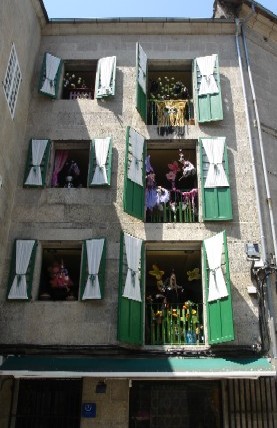
Speaking of the cathedral… my header photo this week is a slice of this photo.
An obviously very important float that dipicts the last supper and is stored INSIDE the cathedral next to the confessionals. It is quite a bit larger than life size. The figures are gold covered wooden sculptures. The sides of the wagon are covered in hammered silver. Here is a bit of detail.
This final image is a poem by one of Lugo’s famous sons. I’m sure his half-head is one of those we saw floating on the marble slabs. I really need to do some research on him and try to get the poem translated. Just from all the nos and nas and references to no life and no death, I have a feeling it’s got something to do with the timelessness of the city. If anyone can supply the translation as a comment, I’ll edit this entry and move it into the body of the text.

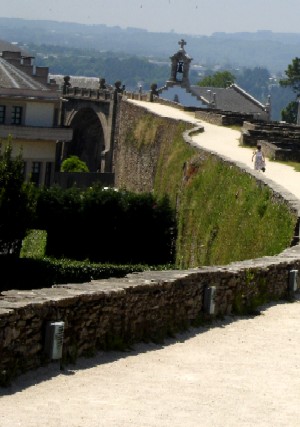
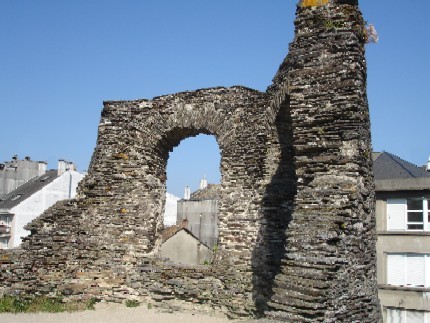
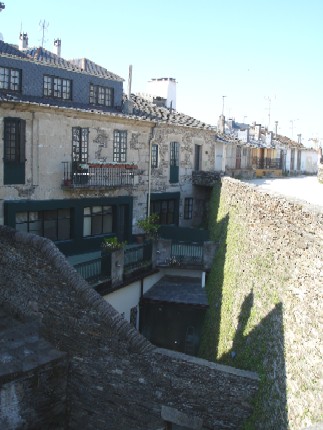
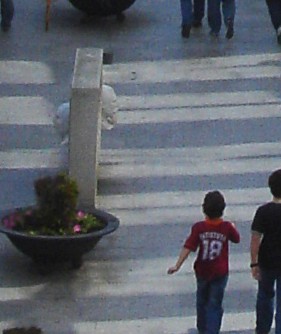
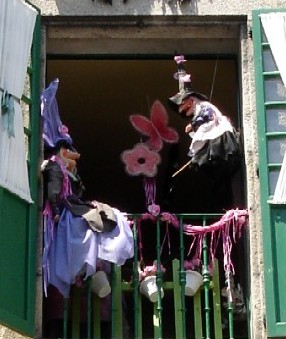
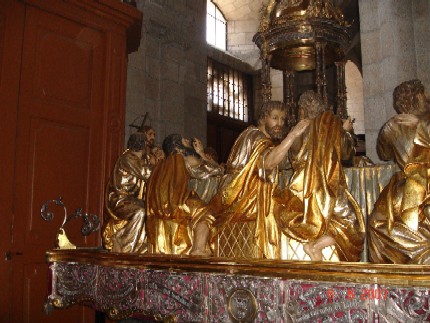
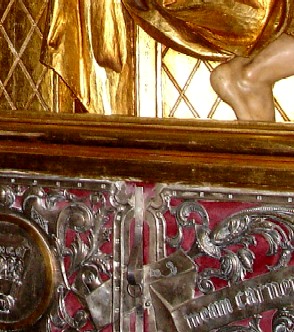
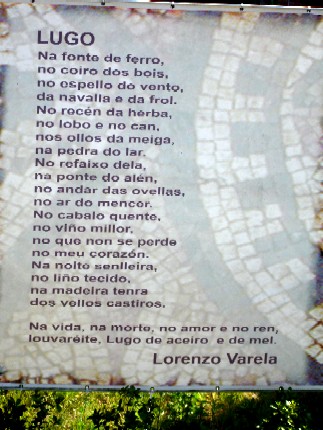
That looks like a really cool city. What made you opt for it as a daytrip rather than spending some time?
Deborah responds: Good question, Kim. It was a matter of time. Isn’t it always? Most of our activity was centered on the coast, a we took the southern route from Madrid to Galicia. So Lugo had to be a day trip for us.
I think, realistically, Lugo could easily be a 2 day visit for someone coming to Santiago from the north. It’s a crossroads city in the middle of Galicia and an importent stop on the Camino.
Wonderful read, Deborah! I think we must have driven near Lugo 28 yrs. ago when we traveled from La Coruña to Madrid. The poem is not an easy translation for a Spanish speaker. I tried looking for a translation in Spanish but couldn’t find one. I’m not at home now and will be away for 2 weeks but when I get back home I’ll try a translation with a Galician dictionary. In the meantime the first two lines talk about an iron fountain and the leather or skin of two oxens.
Deborah responds:
Yes, Maria, you would have driven right through Lugo. If you look at map of northern Spain, you can see that Lugo is truly the crossroads of Galicia.
Thanks so much for offering to tackle the translation. I’m presuming you will be using a Galician/Spanish dictionary. I tried to find a Galician/English dictionary before we left on that trip and couldn’t find one.
Deborah –
Wonderful entry! Loved the photos and descriptions, and I really like your new header photos …
Interestingly enough, my great-grandmother’s maiden name was Lugo. She was from the northern Mexican state of Sonora – she brought her family to the US via Arizona around 1910. Maybe there’s some family connection to Lugo, Spain!
Deborah responds: Colleen, that is something worth doing a little research on, don’t you think?
Perhaps the town of Lugo was founded by HER ancestors.
You would love the town. When Shannon does her Parador research tour, you should go with her. There is one in Lugo, I think.